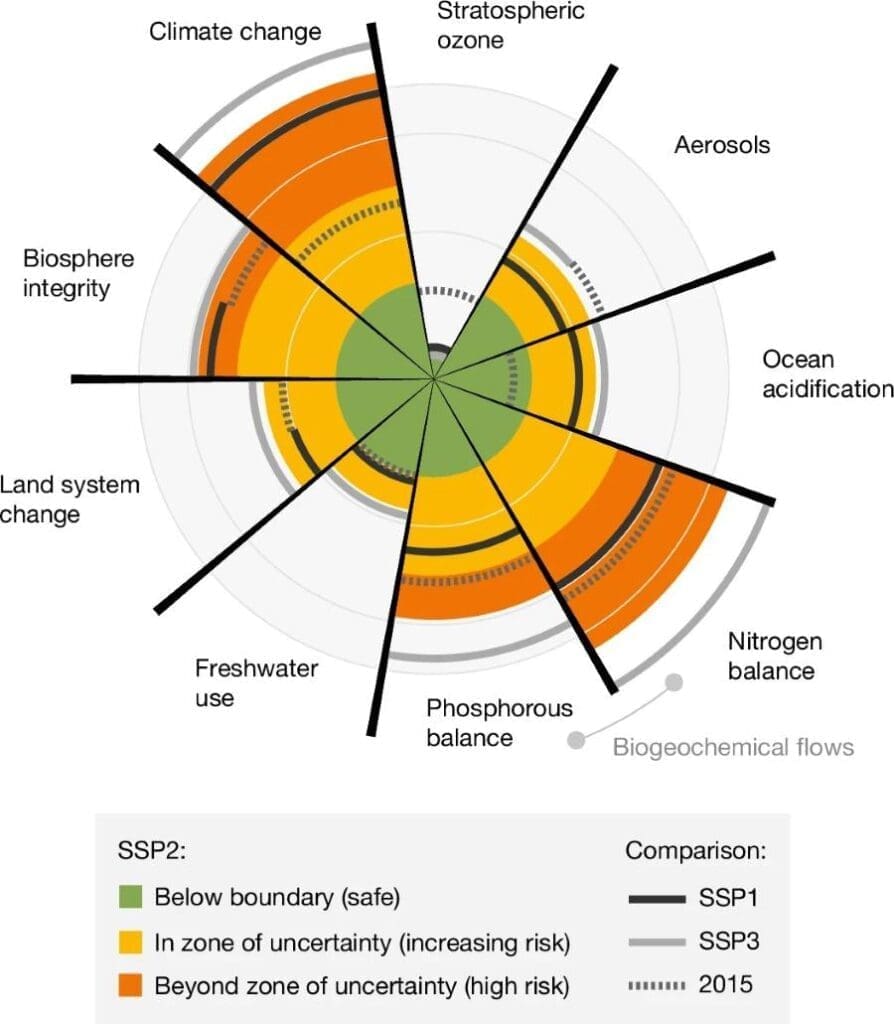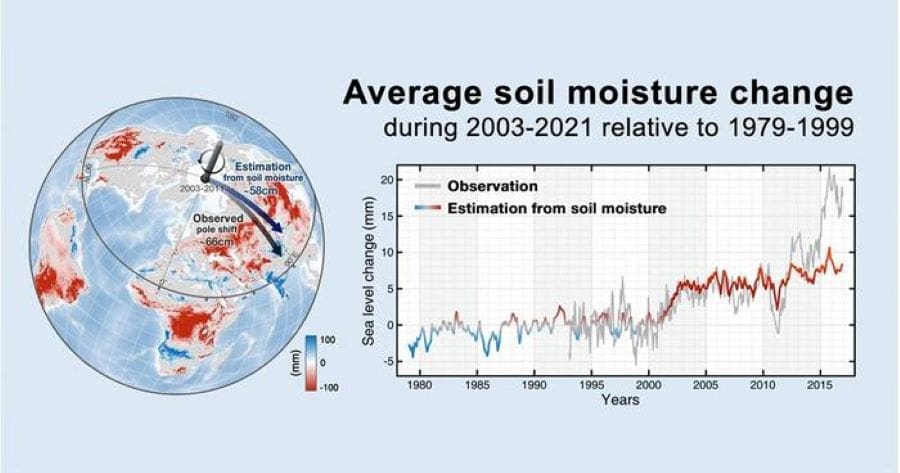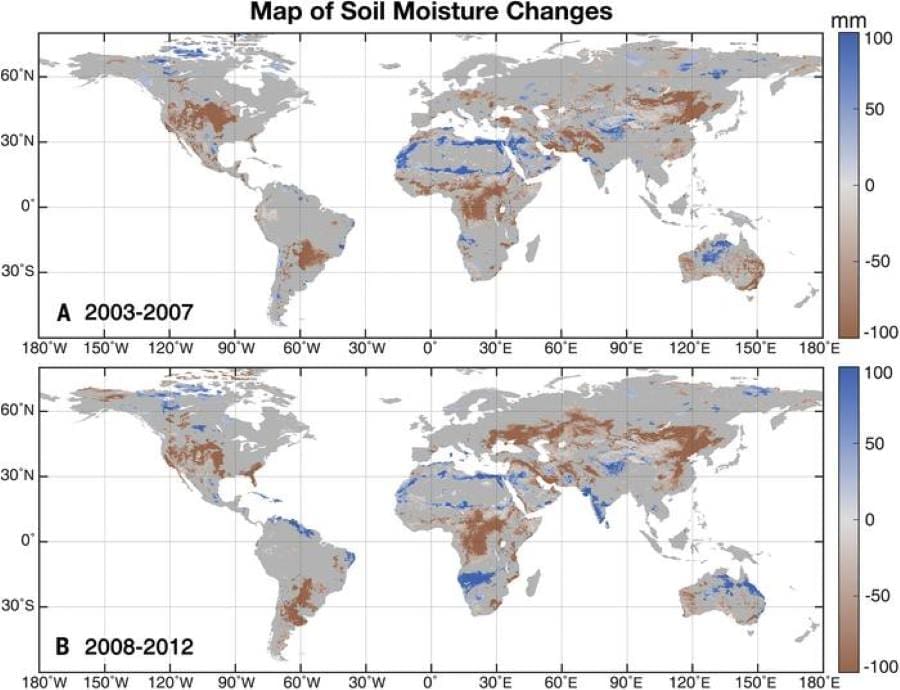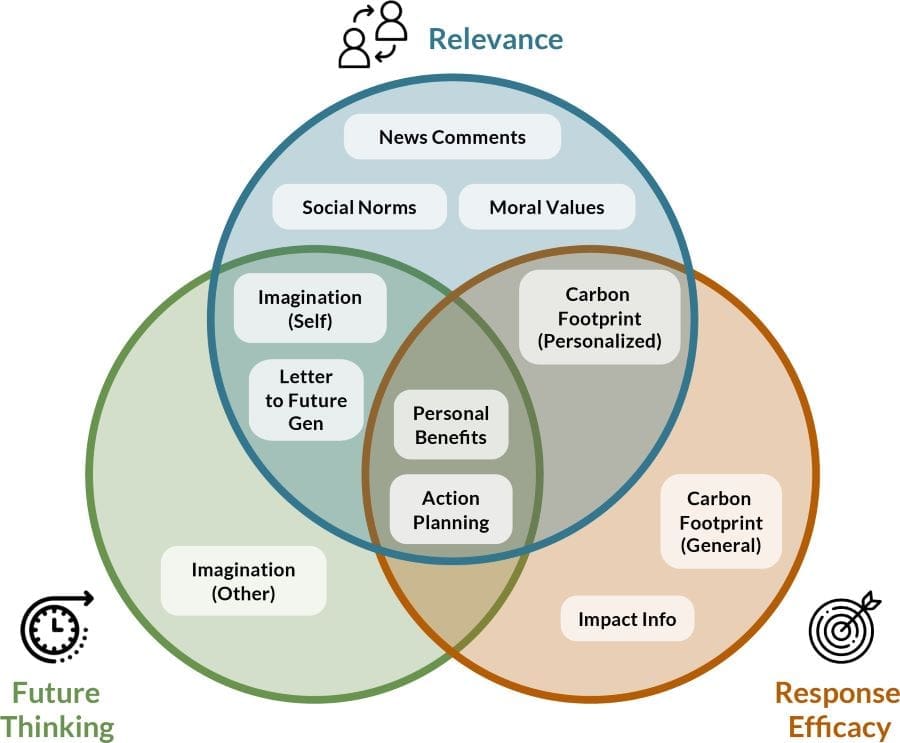Explore the latest insights from top science journals in the Muser Press daily roundup (May 16, 2025), featuring impactful research on climate change challenges.
In brief:
An ink that boosts coral reef settlement by 20 times
In a paper published in the journal Trends in Biotechnology, researchers demonstrate that the ink could boost coral settlement by more than 20 times, which they hope could contribute to rebuilding coral reefs around the world.
“When people think about a coral reef, they often think about how beautiful it is,” says author Daniel Wangpraseurt of the University of California San Diego. “What we sometimes forget is that coral reefs are one of the best structures in protecting our coasts. We are hoping to develop technologies to restore not just the ecosystem but the natural structures that will buffer shorelines against waves, storms, and floods.”
In the past, researchers have tried to restore coral reefs — which have halved across the globe since the mid-20th century — mainly through planting nursery-grown corals. But Wangpraseurt says these lab-grown corals are genetically identical, meaning that they’re susceptible to the same threats.
“If there’s a warming event or a disease outbreak, it can wipe out the whole population. Ideally, we want to recruit corals naturally, which can introduce genetic diversity to the population and enhance their resilience,” says Wangpraseurt.

Biologists have recently discovered that certain rocky pink algae, called crustose coralline algae (CCA), play an important role in attracting coral larvae and encouraging them to settle on the reef. It appears that CCA emits metabolites into the surrounding water, and coral larvae follow these chemical signals.
Inspired by this finding, Wangpraseurt and his team, including first author Samapti Kundu at the University of California San Diego, developed a transparent ink material infused with metabolites derived from CCA. Dubbed SNAP-X, the ink slowly releases these natural chemical cues into seawater over the course of a month. By applying SNAP-X to rocks or other surfaces, researchers can create an inviting microhabitat that helps coral larvae settle and grow.
The team tested SNAP-X outdoors using natural seawater and continuous water flow to simulate the ocean environment. They found that the larvae of Montipora capitata, a primary reef-building coral in Hawaii, were 20 times more likely to settle on substrates sprayed with SNAP-X, and the settlements became denser when the team increased the concentration of the metabolites in SNAP-X.
Given that some species of coral reproduce by releasing their eggs and sperm at the exact same time every year, the researchers recommend syncing SNAP-X deployment with the coral’s spawning cycle to support natural coral recruitment. Depending on the species of coral, scientists can also tweak the ingredients of SNAP-X to include different metabolites and chemical signals that support the development of coral reefs.
The team is now working on methods to scale up the production of SNAP-X. Because the ink contains no living materials, they hope that it will soon be approved for application in the real world.
“It’s really exciting to be able to learn from adjacent disciplines like materials science and bioengineering,” says Wangpraseurt. “I think a lot of the technologies for restoring and protecting our environment are already there, we just need to look outside the box into other fields of study.”
Journal Reference:
Kundu, Samapti et al., ‘Biomimetic chemical microhabitats enhance coral settlement’, Trends in Biotechnology (2025). DOI: 10.1016/j.tibtech.2025.03.019
Article Source:
Press Release/Material by Cell Press
New global model shows how to bring environmental pressures back to 2015 levels by 2050
A first-of-its-kind study published in Nature finds that with bold and coordinated policy choices — across emissions, diets, food waste, and water and nitrogen efficiency — humanity could, by 2050, bring global environmental pressures back to levels seen in 2015. This shift would move us much closer to a future in which people around the world can live well within the Earth’s limits.
“Our results show that it is possible to steer back toward safer limits, but only with decisive, systemic change,” says lead author Prof Detlef Van Vuuren, a researcher at Utrecht University and the Netherlands Environmental Assessment Agency (PBL).
The planetary boundaries framework, first introduced by an international team of scientists in 2009, defines nine critical Earth system processes that maintain the conditions under which human societies have flourished for the past 10,000 years. Crossing these boundaries increases the risk of destabilising the Earth system, pushing it into a much less hospitable state. To date, scientists estimate that six of these nine boundaries have already been crossed — those related to climate change, biosphere integrity, freshwater availability, land use, nutrient pollution and novel entities.
Coming back from the brink
This new study for the first time shifts focus to the future, exploring whether ambitious but technically feasible policies could change our trajectory. “This is the first time we’ve used a forward-looking global model to ask: how do things develop if we continue like this? Can we still avoid transgressing or come back from transgressing these boundaries? And if so, what would it take?” says Van Vuuren.
To answer these questions, the Planetary Boundaries framework was coupled to a comprehensive Integrated Assessment Model — Integrated Model to Assess the Global Environment (IMAGE) — which describes future human development and the possible impacts on the global environment. The model projected outcomes for eight of the nine planetary boundaries under different future scenarios, including those with strong environmental policy action.

Critical systems like climate and biodiversity are already outside safe limits, with most exceeding even the high-risk thresholds, indicating a looming multi-crisis scenario. Using projections for 2030, 2050, and 2100, the study shows that under current trends, all planetary boundaries except for ozone depletion are expected to be breached by 2050. “If we continue down pathways focused on national or local interests, things could deteriorate even further, emphasising the need for coordinated global action,” says Van Vuuren.
Five key measures to bend the curve
The researchers identify five measures that together could significantly reduce environmental transgression:
- Climate mitigation: Achieving the 1.5 °C Paris Agreement target through aggressive reduction of greenhouse gas emissions
- Food-consumption change: A widespread shift to diets that are both healthy and good for the environment, as defined by the EAT-Lancet Commission, reaching 80% global uptake by 2050
- Reduction of food waste: Halving global food waste by reducing losses in supply chains and overconsumption
- Improved water-use efficiency: Reducing water withdrawal for energy, households, and industry by 20%, and for irrigation by 30%, to ensure environmental sustainability
- Improved nitrogen-use efficiency: Increasing nutrient-use efficiency to 70–80% in agriculture by 2050, up from 50% today
Combined, these measures could return the pressure on our planet to roughly that of 2015 — a marked improvement over business-as-usual projections and a crucial step toward ensuring long-term human wellbeing while staying within the Earth’s limits.
Strong action needed
The study also shows it is possible to bring some of the planet’s systems back into the “safe zone” by 2050 if strong policies are put in place. However, for other systems, even the most ambitious efforts may not be enough by then, and we would still be exceeding safe limits. “To ensure a livable planet in the long run, even stronger actions will be needed beyond 2050,” says Van Vuuren.
The authors caution that the assumptions behind these scenarios are ambitious. “Systems are slow to change and we’re modelling near-universal shifts — like widespread dietary changes — which may be overly optimistic given current global trends,” they note.
“Nonetheless, the message is clear. We can still bend the curve,” says Van Vuuren. “While we can’t fully avoid all overshoot, we can come much closer to living within planetary boundaries. That makes a big difference.” In other words, he adds, “The planet is seriously ill, but it’s certainly not terminal yet.”
Journal Reference:
van Vuuren, D.P., Doelman, J.C., Schmidt Tagomori, I. et al., ‘Exploring pathways for world development within planetary boundaries’, Nature (2025). DOI: 10.1038/s41586-025-08928-w
Article Source:
Press Release/Material by Utrecht University
PolyU research reveals sharp depletion in soil moisture, driving land water to flow into the oceans and contributing to a rise in sea levels
The increasing frequency of once-in-a-decade agricultural and ecological drought has underscored the urgency of studying hydrological changes. A research team from the Department of Land Surveying and Geo-informatics of The Hong Kong Polytechnic University (PolyU) has collaborated with international experts to analyse the estimated changes in land water storage over the past 40 years by utilising space geodetic observation technology and global hydrological change data.
This innovative method has revealed a rapid depletion in global soil moisture, resulting in a significant amount of water flowing into the oceans, leading to a rise in sea levels. The research provides new insights into the driving factors behind the alarming reduction in terrestrial water storage and rise in sea levels. The findings have been published in the international journal Science.
Since polar motion reflects mass redistribution within the Earth system, integrating models and observations across the atmosphere, hydrosphere and lithosphere is crucial. However, previous challenges in measuring terrestrial water storage, particularly groundwater and root zone soil moisture, limited understanding of hydrological depletion at continental scales. Prof. Jianli CHEN, Professor of the PolyU Department of Land Surveying and Geo-informatics and core member of the Research Institute for Land and Space and the international team employed satellite altimetry and gravity missions, including the Gravity Recovery and Satellite Experiment (GRACE), and GRACE Follow-On, to enable continental-scale observations of terrestrial water storage variations.

By integrating this with global mean sea levels and polar motion data, the team has explored terrestrial water storage depletion patterns. Notably, this study introduced novel methods for estimating global soil moisture, which improves the accuracy of continental and global scale modeling to enable a more effective understanding of soil moisture variations under climate change.
The melting of Greenland’s ice sheet is recognised as the largest single contributor to the rise in global sea levels, adding approximately 0.8mm annually. This study reveals that between 2000 and 2002, the global terrestrial water storage significantly declined, with a total of 1,614 billion tons of water lost to the oceans, which is twice as much as resulting from the current melting of Greenland ice, and equivalent to a 4.5 mm rise in sea levels. Since then, the rapid loss of terrestrial water storage has been followed by a more gradual but continuous depletion, with no signs of recovery.
In addition, compared to the period from 1979 to 1999, a notable decline in global average soil moisture was observed from 2003 to 2021. Between 2003 and 2011, the Earth’s pole shifted 58 cm toward 93° East Longitude, demonstrating that the continued decline in soil moisture is leading to a reduction in terrestrial water storage.
The team also pointed out that precipitation deficits and stable evapotranspiration caused by global warming, changing rainfall patterns and increasing ocean temperatures are likely the key factors for the abrupt decline in terrestrial water storage. The ERA5-Land soil moisture data of the European Centre for Medium-Range Weather Forecasts’ corroborates these findings, showing substantial terrestrial water storage losses in Africa, Asia, Europe, and South America. In Asia and Europe, the affected areas expanded from northeastern Asia and eastern Europe to broader regions across East and Central Asia, as well as Central Europe, following the sharp water storage depletion observed between 2000 and 2002.
With increasing agricultural irrigation in regions such as northeast China and the western United States, and global greening, soil moisture may further diminish in semi-arid areas with intensive agriculture and high levels of greening. The team suggests the need for improved land surface models which consider these factors for a more comprehensive understanding of long- term changes in terrestrial water storage.

Prof. Jianli Chen said, “Sea level change and Earth rotation serve as indicators of large-scale mass changes in the Earth system. Accurately measured sea level change and variation in Earth rotation provide a unique tool for monitoring large-scale mass changes in the global water cycle. By integrating multiple modern space geodetic observations, it enables comprehensive analysis of the driving factors behind changes in terrestrial water storage and sea level rise.
“This, in turn, provides reliable data for climate and Earth system science experts to further investigate drought issues, aiding authorities in formulating water resource management and climate change mitigation strategies to address new challenges posed by climate change.”
Journal Reference:
Ki-Weon Seo et al., ‘Abrupt sea level rise and Earth’s gradual pole shift reveal permanent hydrological regime changes in the 21st century’, Science 387, 1408-1413 (2025). DOI: 10.1126/science.adq6529
Article Source:
Press Release/Material by The Hong Kong Polytechnic University
What behavioral strategies motivate environmental action?
Survey data show that most people believe climate change is happening, but many don’t act, and as a postdoctoral fellow in Annenberg School for Communication Professor Emily Falk’s Communication Neuroscience Lab, Alyssa (Allie) Sinclair has thought a lot about why that might be.
“People may struggle to understand how the issue is relevant to them or people they know [relevance], focus on the present instead of future consequences [future thinking], or feel like their actions don’t matter [response efficacy],” says Sinclair, also a member of Professor Michael Mann’s Penn Center for Science, Sustainability, and the Media, a joint venture of the Annenberg Public Policy Center and School of Arts & Sciences.
Building off health behavior studies and other literature in psychology, neuroscience, and communication, Sinclair led an interdisciplinary team of researchers examining how to overcome these barriers to climate action. In an “intervention tournament” with 7,624 U.S. adults, Penn researchers including Sinclair, Falk, and Mann tested 17 interventions targeting the themes of relevance, future thinking, and response efficacy to see which were most effective for motivating action.
“We find that helping them think about the future — especially when that future involves themselves and people they care about — is the most effective way to motivate action,” Sinclair says. This is true for motivating both individual actions, such as driving less or eating vegetarian meals, and collective actions, such as donating or volunteering. Interventions emphasizing relevance — why climate change should matter to you and people you care about — were the most effective in motivating people to share articles and petitions.

Their findings are published in the Proceedings of the National Academy of Sciences.
“There’s been a growing number of efforts from other teams and from us to systematically look at what works and what doesn’t work, and it’s been really gratifying to see the fruits of that — to see that people are open to change when we give them the tools and resources,” Falk says. This study builds on her research on messaging to motivate positive changes in health behaviors.
This study embodies the call in Penn’s strategic framework, In Principle and Practice, for an “all-in” University effort to do more in the challenge of climate.
“This work reflects the emerging collaborations across campus in the climate space, something that I’m trying to foster in my new role as Vice Provost for Climate Science, Policy & Action,” Mann says, adding that “understanding how to communicate the science and its implications in a way that leads to useful policy and action is central” to the role.
The work is also inventive in its approach. Sinclair, the paper’s first author, explains that the traditional model of testing whether one idea works makes it difficult to compare findings across studies, so the researchers decided to test many ideas. She says intervention tournaments are not new, but they are rare, as they are ambitious efforts involving a lot of time, energy, and expertise.
Findings
The study — conducted among participants who affirm the existence and anthropogenic causes of climate change — found that two strategies targeting future thinking had the strongest impact on intentions to act: imagining oneself experiencing a negative future that could result from not addressing climate change and writing a letter for a child to read in the future. Both increased intentions to engage in both collective and individual actions.
The letter-writing approach also had the highest impact on intention to share petitions, both broadly on social media and directly with another person. Two interventions targeting relevance had the greatest impact on intention to share news articles: describing why news headlines on climate change matter to them and to people they know. They found that interventions emphasizing response efficacy increased the perceived impact of pro-environmental actions but did not consistently inspire action.
Some strategies exist at the intersection of relevance, future thinking, and response efficacy: brainstorming short-term personal benefits from engaging in pro-environmental behaviors in the next six months and developing a detailed plan to achieve an individual or collective goal. These also increased intentions to act.
Researchers also identified ineffective strategies, showing that receiving information about reducing one’s carbon footprint did not increase intentions to act. This is important because many environmental agencies promote actions focused on individual carbon footprints, but these strategies may not be effective.
“There is a huge gulf between the actions people tend to think make a difference, and the actions that actually make a difference when it comes to climate action,” Mann says. “Practitioners, i.e. communicators and organizations that participate in climate communication, could increase their effectiveness by incorporating the key findings of this and related work.”
Sinclair says the perspective of climate scientists has been missing from a lot of behavioral science work on climate change, and Mann advised the team on what actions matter most.
The road ahead
The authors note that while research shows “behavioral intentions are reliably related to actual behavior,” an important goal for future work is to test whether their top-performing interventions change real-world behavior. Such studies could measure the impact on a particular action — such as donating to environmental organizations or signing up for renewable energy programs — or take a longitudinal approach by repeatedly assessing participants’ behaviors in real time.
In the future, the team aims to adapt their findings into interactive online tools, work with museums to highlight the leading interventions through displays and interactive activities, and partner with environmental journalists.
“Overall, we recommend illustrating future scenarios and emphasizing the personal and social impact of climate change as leading strategies to promote behavior change and information sharing,” they write. Additionally, they note that their findings around behavior change, motivation, and information sharing have potential applications in domains beyond climate action, such as for motivating healthy behaviors or civic engagement
Journal Reference:
A.H. Sinclair, D. Cosme, K. Lydic, D.A. Reinero, J. Carreras-Tartak, M.E. Mann, & E.B. Falk, ‘Behavioral interventions motivate action to address climate change’, Proceedings of the National Academy of Sciences 122 (20) e2426768122 (2025). DOI: 10.1073/pnas.2426768122
Article Source:
Press Release/Material by University of Pennsylvania
Featured image credit: Gerd Altmann | Pixabay



